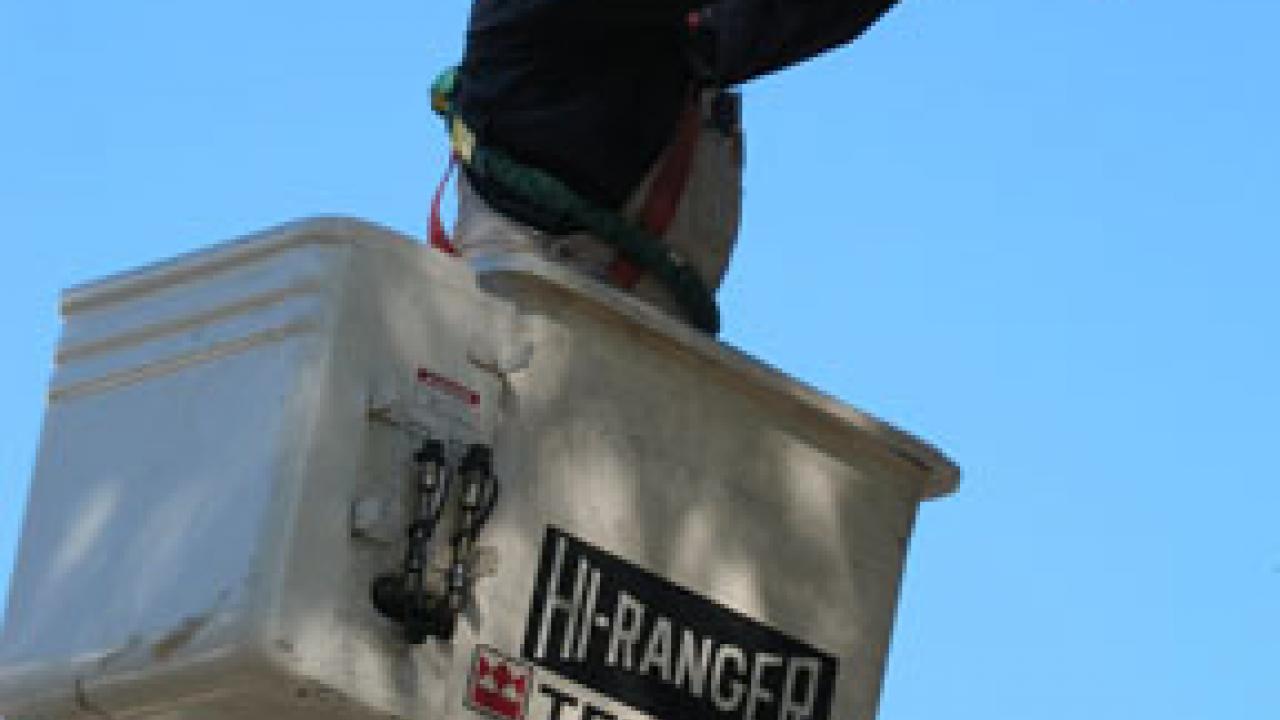No amount of exterior lighting would convince students May Chang, Amna Khan and Janet Lee to go walking on campus alone at night.
Not because they feel less safe at UC Davis than elsewhere. The fact is, these students and many others will not walk alone at night anywhere. "My mother would kill me," said one young woman who works on campus.
But, whether you are walking in a group or riding your bike, every little bit of light helps. So Chang, Khan, Lee and a few dozen other students gathered one night earlier this month for a lighting safety walk, the first in more than a year, trekking from one corner of campus to the other on a hunt for bad lighting.
With some 4,000 lights on poles on the main campus, the electric crew needs all the help it can get to find lights that need to be repaired or replaced.
The student volunteers, most of them from the co-ed Alpha Phi Omega community service fraternity, broke into groups to cover six zones. After close to two hours on the trail, the teams came back to the Memorial Union flagpole with clipboards full of notes.
All together, the teams reported 273 nonworking lights and 54 locations where lights were obscured by tree branches and leaves. Electric and grounds crews went to work quickly to make the repairs.
For example, the team covering the Health Sciences District identified a dark spot in a parking lot — a place where three streetlights in a row were not working.
Chris Cioni, associate director of the Utilities Division, attributed the problem to a time clock. "We had that squared away the next morning," said Cioni, who participated in the safety walk.
UC Davis Police Chief Annette Spicuzza was there, too. "We are making history tonight," she said, referring to the record number of participants, "and we really thank you for doing this."
In her instructions to the troops, she said: "We'd like you to focus on the paths where we'd like you to walk," meaning lighted paths that are intended for walking or bicycling.
In an earlier interview, Spicuzza said safety dictates that people should walk "with, and toward, the light."
Still, the chief and other campus authorities know that some students and others like to plot their own paths. "If you see a route that you think should be a path, write that down," Spicuzza told the lighting safety walk volunteers.
Those suggestions will go to the resurrected Exterior Lighting Committee, the chief said. "We will consider adding lights where there are none now — but there are no guarantees," she said.
Spicuzza explained that people should not walk at night in some parts of campus — and that is why you will not see lights in those places. A good example is the eucalyptus grove near Dobbins Field and the Student Housing office, east of the Activities and Recreation Center in the northern part of campus.
"That's really creepy," Khan said while walking on the lighted path adjacent to the eucalyptus grove.
Khan, a third-year biochemistry major, continued on with her safety walk teammates: Chang, a second-year student majoring in psychology, and Lee, a third-year student majoring in neurobiology, physiology and behavior.
On the path in front of Hoagland Hall, they came across a dim light. Chang kicked the pole, and the light brightened. She turned to Lee, holding the team's clipboard, and said: "Make a note: Turns on when kicked!"
Cioni said lights can become dim or turn off and on sporadically when they are "dying" and need to be replaced. Or there could be a problem with the wiring.
Farther east along this same route, the team came across a dark section of path between two lights — both working but obscured by tree branches and leaves.
Robin Parlow, a crime prevention specialist with the Police Department, checked the area with a light meter. It showed zero light getting to the section of path between the light poles.
She said Buildings and Grounds would be called in to trim the branches. Then the path would be checked again at night, with the lights on.
Sal Genito, director of Buildings and Grounds, said tree trimming is not always the answer. Sometimes, the whole tree must go. "We remove more trees because of safety than for any other reason," he said.
Genito, Cioni and Spicuzza agreed that the lighting safety walk gave the campus a lot of useful information to help crews catch up on lighting deficiencies. Spicuzza said: "This gives us a great starting point."
Allison Simonette, a senior chemistry major and co-chair of Alpha Phi Omega, said student participation in the annual safety walks is helpful because students and maintenance crews may have different perspectives.
"I found a bike rack that was not very well lit, and maybe it's not very important to them," Simonette said. But it is important to students like her who lock up their bikes on campus, she said.
Lee said she hopes to see better campus lighting as a result of the safety walk. "Tonight showed that it can be better," she said.
Media Resources
Dave Jones, Dateline, 530-752-6556, dljones@ucdavis.edu
